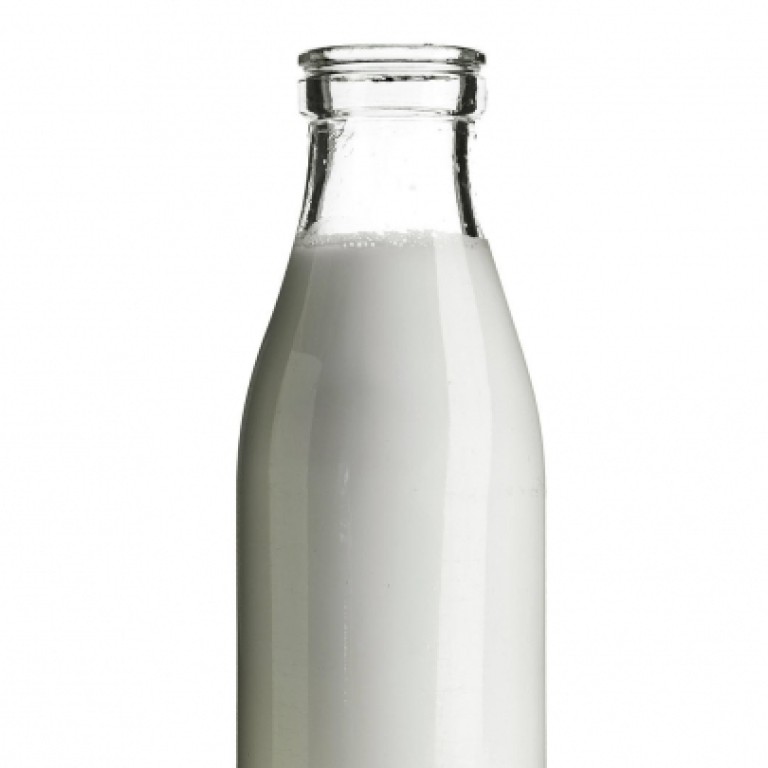
Calcium intake sorely lacking in Hongkongers
Hongkongers are sorely lacking calcium in their diet, according to a recent poll of more than 1,300 people. The average intake of the vital mineral is only 574mg, a far cry from the recommended 1,000mg, found the street survey conducted in May by milk powder brand Anlene.
Hongkongers are sorely lacking calcium in their diet, according to a recent poll of more than 1,300 people. The average intake of the vital mineral is only 574mg, a far cry from the recommended 1,000mg, found the street survey conducted in May by milk powder brand Anlene.
The results are consistent with previous studies, indicating that more education about the importance of calcium is urgently needed to prevent potentially dire consequences.
The body needs calcium not only to maintain strong bones, but also for muscles to move and for nerves to carry messages between the brain and every body part. Calcium also helps blood vessels move blood throughout the body, and helps release hormones and enzymes that affect almost every function in the body.
A lack of calcium over the long term can cause low bone mass (osteopenia) and increase the risks of osteoporosis and bone fractures.
Orthopaedic surgeon Dr Cheung Kai-yin says there's been an increase in bone issues in Hong Kong for the past several years, mainly affecting people older than 50. The recommended daily calcium intake for this age group is 1,200mg.
Osteoporosis, which literally means porous bone, is a major public health problem worldwide, and this burden is growing with increasing life expectancy and population ageing, according to the Osteoporosis Society of Hong Kong. It is forecast that, by 2050, more than half of all hip fractures in the world, a total of 3,250 million cases, will occur in Asia - and mostly in China.
In their report, published in April, the society notes that reports from the 1980s and '90s showed a traditional Chinese diet contained a calcium content of around 400mg daily. Publications from the 2000s showed an increase in daily dietary calcium content to 500mg to 600mg.
Because dairy products are the major food source of calcium, the high incidence of lactose intolerance in Chinese people could explain the low intake. However, dietitian Priscilla Lau notes that dark green leafy vegetables and hard tofu are also calcium sources.
It's much healthier to focus on a pure or concentrated source of calcium, such as milk
The Anlene survey found that 28 per cent of Hongkongers preferred to consume milk by having it in coffee. But Lau says caffeine in coffee leaches calcium from bones. "It's much healthier to focus on a pure or concentrated source of calcium, such as milk," she says.
Lau adds that the lactose intolerant can take yogurt and cheese pretty well, and full cream milk tends to be better tolerated. Also, a tolerance to lactose can be built up, starting with a third of a cup of milk, increasing the amount gradually over time.
People usually don't know they're taking too little calcium, because, in the short term, the body maintains calcium levels in the blood by taking it from bone. There are no obvious symptoms. Osteoporosis is diagnosed usually only after a fracture.
Other lifestyle habits also contribute to healthy bones. Regular weight-bearing exercise, such as weightlifting and running for 30 minutes a day three times a week, is a key factor, says Anthony Kwok, vice-president of the Hong Kong Osteoporosis Foundation.
The survey found that 74 per cent of respondents did not meet this requirement.
A daily 15-minute dose of sunshine, Kwok adds, allows vitamin D synthesis, which enhances calcium absorption. Only 28 per cent of respondents met this.
"The effects of osteoporosis are incredibly serious and can include severe fractures to the wrist, hip or vertebrae, loss of mobility, and stooping due to spinal curvature," says Kwok. "We urge people to make small lifestyle changes to protect themselves."
Community-based nutrition education can help increase calcium intake, a Vietnamese study shows.
Researchers from the National Institute of Nutrition in Hanoi carried out a controlled trial in Vietnam's Red River Delta, involving 140 women aged 55 who had less than 400mg calcium per day. An intervention group was given nutrition education counselling over 18 months to improve calcium intake.
After 18 months, these women had increased their calcium intake significantly and their bone mass had remained stable. In comparison, the bone mass of the control group (which had not received counselling) had decreased by 0.5 per cent.
Supplements can help boost low dietary calcium intake, but Lau says it's preferable to obtain the mineral from food sources.
There have been suggestions of a possible link between calcium supplements and a potential increased risk of cardiovascular disease.
But an expert panel from the Council for Responsible Nutrition in the US last year examined rigorous scientific studies and found they were "more confident than ever in both [calcium supplements'] health benefits and safety".
Panelist Dr Robert Heaney said: "Consumers can feel confident about the safety of their calcium supplements and should continue taking them with confidence.
"They should, however, be aware of how much calcium their diets provide, and then supplement accordingly."

